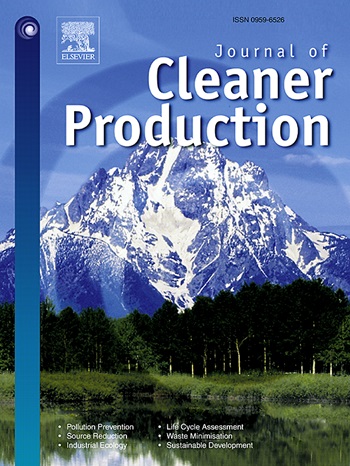Acid value reduction of waste edible oil via two-step catalysis for effective asphalt rejuvenation
IF 10
1区 环境科学与生态学
Q1 ENGINEERING, ENVIRONMENTAL
引用次数: 0
Abstract
This study addresses the poor rejuvenation efficiency of waste edible oil (WEO) with high acid value (AV) by developing a two-step catalytic modification method. The process involves acid-catalyzed esterification followed by base-catalyzed transesterification. The chemical characteristics of WEO before and after modification were systematically characterized using gel permeation chromatography, gas chromatography-mass spectrometry, Fourier-transform infrared spectroscopy, and nuclear magnetic resonance. The rejuvenation potential of modified WEO was then evaluated through comprehensive performance tests, including penetration, softening point, temperature sweep, frequency sweep, and bending beam rheometer measurements. Finally, comparative spectroscopic analysis of different binders was performed to elucidate the rejuvenation mechanism. The results showed that the optimum conditions were a methanol-to-WEO ratio of 8:1, and a concentrated sulfuric acid dosage of 0.75 wt%, at 52 °C for 1.5 h; followed by a methanol-to-oil ratio of 9:1, 1 wt% potassium hydroxide, at 55 °C for 1 h. The process reduced AV from 2.06 to 0.16 mg KOH/g, achieving >91.77 % fatty acid methyl ester conversion. Comprehensive characterization confirmed the chemical transformation. The modified WEO effectively restored the rheological properties and chemical structure of aged asphalt compared to WEO. The rejuvenation mechanism was identified as primarily physical blending. Overall, this method provides an effective solution for recycling high-AV WEO in asphalt pavement rehabilitation.

利用两步催化法降低废食用油酸值,实现有效的沥青再生
针对高酸值(AV)废食用油(WEO)再生效率差的问题,研究了两步催化改性方法。该过程包括酸催化的酯化反应,然后是碱催化的酯交换反应。采用凝胶渗透色谱、气相色谱-质谱联用、傅里叶变换红外光谱、核磁共振等方法对改性前后WEO的化学特性进行了系统表征。然后通过综合性能测试,包括渗透、软化点、温度扫描、频率扫描和弯曲梁流变仪测量,来评估改性WEO的回春潜力。最后,对不同粘结剂进行了光谱对比分析,阐明了再生机理。结果表明:最佳工艺条件为甲醇与稀油比为8:1,浓硫酸用量为0.75 wt%,温度52℃,反应时间1.5 h;在55℃条件下,甲醇油比为9:1,氢氧化钾质量分数为1,反应1 h。该工艺将AV从2.06 mg KOH/g降至0.16 mg KOH/g,脂肪酸甲酯转化率达到91.77%。综合表征证实了化学转变。与WEO相比,改性后的WEO有效地恢复了老化沥青的流变特性和化学结构。再生机制主要是物理混合。综上所述,该方法为沥青路面修复中高av WEO的回收提供了有效的解决方案。
本文章由计算机程序翻译,如有差异,请以英文原文为准。
求助全文
约1分钟内获得全文
求助全文
来源期刊

Journal of Cleaner Production
环境科学-工程:环境
CiteScore
20.40
自引率
9.00%
发文量
4720
审稿时长
111 days
期刊介绍:
The Journal of Cleaner Production is an international, transdisciplinary journal that addresses and discusses theoretical and practical Cleaner Production, Environmental, and Sustainability issues. It aims to help societies become more sustainable by focusing on the concept of 'Cleaner Production', which aims at preventing waste production and increasing efficiencies in energy, water, resources, and human capital use. The journal serves as a platform for corporations, governments, education institutions, regions, and societies to engage in discussions and research related to Cleaner Production, environmental, and sustainability practices.
 求助内容:
求助内容: 应助结果提醒方式:
应助结果提醒方式:


